‘Save the Arctic’ campaign escalates as activists block two more rigs


Greenpeace activists from 12 countries blocked two separate oil rigs destined to drill in the Arctic ocean this week (Tuesday 27 May 2014). The environmental group said that the threat to the rapidly melting Arctic from a group of international oil companies requires ‘a truly global response’.
A group of 30 activists in the Dutch port of IJmuiden occupied the GSP Saturn, a rig contracted by Russia’s state owned energy company Gazprom on its way to the remote Pechora sea. They were removed after five hours and six activists remain under arrest.
Another group of 15 is currently occupying the Transocean Spitsbergen, under contract to Norway’s state owned company Statoil as it prepares to drill the world’s northernmost well in the Barents Sea. Both Gazprom and Statoil’s projects are taking place deep inside the Arctic circle.
Commenting on the two protests, Greenpeace International Arctic campaigner Ben Ayliffe said: “The Arctic matters to us all, and protecting it demands a truly global response. We cannot let a reckless club of international oil companies hunt for the last drops as the ice melts away. The websites of Shell, Gazprom or Statoil might look different but their willingness to ignore the reality of oil spills and the human cost of climate change is exactly the same.
“Shell has already shown just how difficult it is to work in the US Arctic, where extreme cold and remote conditions led to a series of embarrassing failures . Over five million people are now telling these companies that Arctic drilling isn’t worth the risk, either to the environment or their own reputation.”
Greenpeace is calling for a ban on oil drilling and unsustainable industrial fishing in the whole of the Arctic, as well as a protected sanctuary around the North Pole.
Since the campaign began the French oil company Total has ruled out drilling for oil in the offshore Arctic, its CEO recognising that ‘a spill would do too much damage to the image of the company’. Russian oil giant Lukoil has also suggested it 'wouldn't give a kopeck' to offshore development in the Arctic. The government of Finland last year adopted the concept of an Arctic sanctuary as official policy.
A worldwide petition at www.SaveTheArctic.org has attracted the support of over five million people, including 11 Nobel peace prize winners.
California Drought Cost Nears $2 Billion
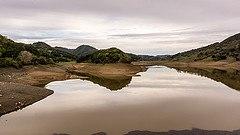

Researchers at the University of California, Davis Center for Watershed Sciences have attached a dollar estimate to the economic impact of this year’s ongoing drought in California’s Central Valley, the state’s agricultural heartland. Their preliminary report, released earlier this week, estimates a total economic loss of $1.7 billion, along with “substantial long-term costs” of groundwater overdraft that will go unaccounted for.
Last year marked the driest year in California since records began in 1895, and in January Gov. Jerry Brown declared a drought state of emergency. Seven of the state’s 12 main reservoirs are at or below 60 percent of the historical average, and a dry winter has left snowpack levels--an important source for replenishing water supplies--at just a fifth of historical levels, as of late April.
Several dry seasons in a row have pushed greater reliance on the state’s grounwater reserves. Overall water delivery to the agriculture sector will drop by 33 percent this year, according to the UC Davis report. But, with increased groundwater pumping making up for the bulk of that loss, the overall water losses will be about 7.5 percent of the industry’s average use. Still, researchers estimate this will result in the loss of 410,000 acres in fallowed land, or an estimated $740 million in crop revenue loss. Feed crops will take the biggest loss--close to 150,000 planted acres--contributing, in part, to expected rises in meat prices this year.
Increased groundwater pumping also means greater costs for farmers. Including those costs, estimated at $450 million the economic toll on Central Valley farmers rises to $1.2 billion, or about 5 percent of the sector’s $25BN annual value. Full-time and seasonal job losses and knock-on economic effects drive the total economic impact of the drought on Central Valley agriculture to $1.7 billion. Researchers estimate a loss of 14,500 jobs as a result of dry conditions.
All considered, the effects of the drought may not as dramatic as earlier thought. However, report authors caution that increased reliance on groundwater today could have much greater effects down the road, including dry wells, decreased water quality and stream depletion.
In the wake of January’s drought state of emergency announcement, the DWR has begun work to track gaps in groundwater monitoring. California law does not require local agencies to implement a groundwater management plan, but there are incentives, including eligibility for state funding in drought periods, to drive participation in water management planning.
According to an April report by the DWR ordered by the governor, only 169 of 515--or one-third--of alluvial groundwater basins are monitored under the statewide monitoring program. Some areas of the state either lack any groundwater management plan or have one that has not been updated to respond to the 2012 changes to California’s water code. Image credit: Flickr, Don DeBoldTom Steyer vs. the Koch Brothers: Let the Games Begin
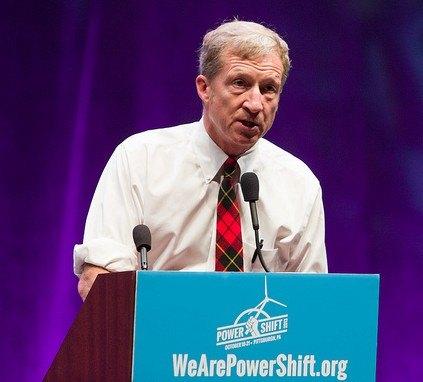

In one corner, weighing in at just over $100 billion, we have the heavy-weight Koch Brothers, with roots in the John Birch Society and untold billions vigorously applied in a continuing effort to try and shift the American political landscape strongly to the right. Reflecting their roots in their chemical and petroleum empire, to them environmental considerations are at best a back seat concern.
In the other corner, weighing in at $1.6 billion, is the welterweight Tom Steyer, hedge fund manager and crusader for liberal causes and the environment.
Steyer came out Thursday to announce the 2014 Strategic Plan for his superPAC, NextGen Climate. Specifically, Steyer wants to put climate change at the heart of the political conversation. In a press conference, Steyer said, “Our mission is to act politically to prevent climate disaster and to preserve American prosperity.”
He was clear that his team is playing to #winonclimate. “We will inevitably win on this because of the facts,” he said, “but we are trying to win faster because time is of the essence.”
The campaign will use climate as a wedge issue, to motivate voter turnout and show that being anti-science will hurt the candidates NextGen opposes, especially in cases (like the 2013 Virginia gubernatorial race) where “the connection between a candidate’s fossil fuel donors demonstrably conflict with the best interests” of his or her constituents.
The team has targeted seven states, highlighting specific campaigns within those states in which they will provide financial support and get-out-the-vote efforts in opposition to candidates that “deny basic science,” and are “anti-women and anti-immigrant.” These are as follows:
- Florida: Governor’s race opposing Rick Scott
- Iowa: U.S. Senate race opposing Joni Ernst and Mark Jacobs
- New Hampshire: U.S. Senate race opposing Scott Brown
- Colorado: U.S. Senate race opposing Cory Gardner
- Pennsylvania: Governor’s race opposing Tom Corbett
- Michigan: U.S. Senate race opposing Terry Lynn Land
- Maine: Governor’s race opposing Paul LePage.
In his brief remarks, Steyer said, “We are strong believers that climate is the challenge of our generation, and that we cannot wait, and that the problem is political. So, we are acting politically to try and resolve a difficult political dilemma. We distinguish ourselves from the people on the other side in a number of ways. One is that are not acting in our own economic self-interest, except in the sense that it would benefit every American. We are trying to do it as openly and transparently as possible. And we are trying to find campaigns in 2014 where we can take part and put climate on the ballot.”
The criteria that they are using requires "that there be substantial differences between the candidates on energy and climate in a given race. That there is an opportunity if we should win, for specific significant policy progress … and where there is a potential for longer term impact.”
Chris Lehane, a veteran Democratic political strategist, has been hired to coordinate the effort.
Meanwhile, the Koch brothers SuperPAC, Americans for Prosperity, has targeted four Democratic senators: Mary L. Landrieu of Louisiana, Mark Begich of Alaska, Kay Hagan of North Carolina and Mark Pryor of Arkansas that they consider vulnerable because of their support for climate change action.
I’m sure the local media outlets would love to see a head-to-head contest, with each side pouring in millions of dollars for ads, each side trying to outdo the other, but that is not in the cards at this time.
Image credit: EnergyActionCoalition: Flickr Creative Commons
RP Siegel, PE, is an inventor, consultant and author. He writes for numerous publications including Justmeans, ThomasNet, Huffington Post, and Energy Viewpoints. He and Roger Saillant co-wrote the eco-thriller Vapor Trails, the first in a series covering the human side of various sustainability issues including energy, food, and water in an exciting and entertaining romp that is currently being adapted for the big screen. Now available on Kindle.
Follow RP Siegel on Twitter.
Interactive Map of World Ocean Pollution Shows is the Plastic Most Common Type
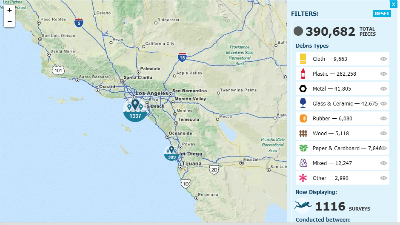

Plastic pollution in the world’s oceans is a huge problem. Plastic makes up the majority of all trash floating in the ocean, with 46,000 pieces per square mile, according to TakePart. Plastic does not biodegrade but photodegrades with sunlight and breaks down into smaller pieces. Those smaller pieces are consumed by marine life or washed up on beaches.
There are great, big floating masses of plastic debris within the oceans; more than 100,000 marine mammals and 1 million seabirds die every year from eating or becoming entangled in plastic. The Great Pacific Garbage Patch lies in the North Pacific Gyre off the California coast. The plastic pieces that make up the Great Pacific Garbage Patch--which is around twice the size of Texas--outnumber marine life by six to one.
Even the Arctic Ocean has plastic debris: USA Today recently reported that the Arctic Ocean may have “trillions of small pieces of plastic and other synthetic trash.” The plastic in the Arctic Ocean is being released “into the world's oceans as global warming melts the polar cap.” It is even bigger than the Great Pacific Garbage Patch, as the concentration of plastic debris floating around in the Arctic is 1,000 times greater.
Created more than 20 years ago to educate divers about ocean issues, Project AWARE now maps ocean pollution. Three years ago on World Oceans Day, June 8, 2011, Project AWARE launched the Dive Against Debris program, in which volunteer scuba divers removed garbage they found underwater. The divers also reported on what they found, which has led to the creation of an interactive map of the world’s ocean garbage. The map visualizes more than 400,000 debris items reported. The biggest source of debris reported by Project AWARE divers is plastic, which made up almost 70 of the garbage found. The types of plastic discovered by the divers include single-use plastics thrown away daily, such as bottles and bags.
Looking at some of the places reported on by Project AWARE divers in California shows that plastic is the most common types of debris reported:
- Monterey: 11 total pieces of debris (30 pounds estimated); six plastic
- Malibu Pier and Surfrider Beach: 55 total pieces of debris (40 pounds estimated); 38 Plastic
- Malibu Pier and Surfrider Beach: 134 total pieces of debris (350 pounds, estimated); 58 plastic
- La Jolla Shores: 23 total pieces of debris (3 pounds, estimated); 15 plastic
- Marine Room, La Jolla: One piece of debris; one plastic
- Tourmaline Beach/Surfing Park: 285 total pieces of debris (300 pounds, measured); 146 plastic
- Corona Del Mar State Beach: 59 total pieces of debris (200 pounds estimated); 26 plastic
- Belmont Pier East: 11 total pieces of debris (1 pound estimated); 10 plastic
- Belmont Pier East: 21 total pieces of debris (4 pounds estimated); 20 plastic
- Belmont Pier East: 237 total pieces of debris (37 pounds estimated); 192 plastic
- Long Beach Belmont Pier: 817 total pieces of debris (50 pounds estimated); 751 plastic
The average American will throw away about 185 pounds of plastic each year, TakePart estimates. An estimated 50 percent of plastic waste is only used once before being thrown away. Cleaning up plastic pollution is costly: According to a Natural Resources Defense Council (NRDC) analysis of 95 California communities, the annual costs for preventing litter from becoming pollution is $428 million a year.
Image credit: Kevin Krejci
Power in Outdoor Spaces: How a Few Companies are Leading the Charge

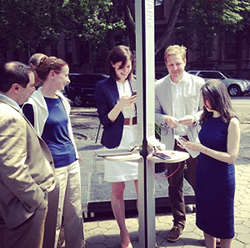
By Jim Innes
With the Association for the Advancement of Sustainability in Higher Education (AASHE) encouraging colleges to incorporate green technology and a growing number of government grants awarded to universities to install solar-power solutions, campuses are looking beyond solar panel installations on buildings.
As consumers become more dependent on laptops and tablets, staying connected to a power sources has become a top priority. Smartphones may be getting smarter, but their batteries are draining faster, and so mobile tech-savvy people are looking for reliable public places to recharge electronic devices. Rather than fight over limited outlets and drive up electric bills, a few innovative companies are finding ways to offer renewable, free solar energy charging stations for community use.
- Social enterprise-based d.light design manufactures and distributes solar lighting and power products targeting the 2.6 billion people globally without access to reliable electricity. d.light’s small-scale, distributed renewable energy solutions designed for households and small businesses are transforming the way people all over the world can access and pay for power.
- StreetCharge public charging stations debuted in New York in partnership with AT&T in 2013 and have been popping up with installations across the country. Solar power systems developer Goal Zero and Brooklyn design studio Pensa joined forces for these stations topped by PV panels that charge up a powerful internal battery. Six phones can be charged at a time, but there is no seating, so practicality and comfort may be an issue.
- CarrierClass Green Infrastructure’s ConnecTable Solar-Charging Stations are fully engineered solar power charging and backup power systems designed to accommodate a range of table design aesthetics, surface materials, and site design objectives. They feature an uncompromising structural integrity with 90mph wind ratings, and multiple tables can be combined to form a micro grid and a backup power source during extended power outages.
- Sol Power LLC builds solar powered charging stations for cell phones. The safe and secure lockers are designed to charge up to 15 cell phones at once. They also offer a customizable outdoor advertising platform. The downside is a limited battery functionality that would likely go down after extended bad weather or heavy charging.
- SOLAQUA’s Sundog Power-To-Go allows consumers to take their power anywhere. Built to be mobile, the power station is built on a cart for easy maneuverability. Take it with you to run your laptop, mobile cooler, cell phones, power lights, and audio systems. Standard 110v 3 prong outlets assure that most common household items can be plugged in, but this device is strictly utilitarian with limited power supply over longer periods.
- Grid2Go Solar Mobile Charger allows consumers the freedom to charge two devices simultaneously without being tied down to outlet availability. Small and powerful, they can charge most smart phones from empty to full three times before it needs to be recharged. They can be recharged from the sun or from a wall or USB outlet and comes with cords and connectors.
These solar charging solutions are being utilized everywhere from off-grid camping facilities to universities, theme parks, sports complexes, corporate parks and public parks. As we become more technology-reliant, the demand for energy is only increasing. But we can not continue to rely on fossil fuels. Solar technology companies continue to pave the way, utilizing a free, clean resource for abundant energy.
Image credit: Street Charge via Instagram
Jim Innes is the CEO of CarrierClass Green Infrastructure, a leader in off-grid solar technology. CCGI designs, sells, and installs solar electric, solar thermal, and custom off-grid solar power products for commercial and residential customers. Learn more at www.ccgigogreen.com.
3p Weekend: 10 Budding Trends in Sustainable Fashion


Over the past few months, we've been exploring the environmental and social impact of fashion in an in-depth series, so we have our eyes peeled for budding trends. From reuse and upcycling to addressing supply chain worker rights, here are 10 that caught our attention.
1. Fair Trade makes a difference in more ways than one
Perhaps best known for certification in coffee, Fair Trade is a market-based approach to improving the lives of farmers and workers, protecting the environment, and delivering quality and safety. At its core, Fair Trade puts people at the center of sustainability.
Whether on a farm or in a factory, participants must adhere to rigorous standards, covering areas such as safe working conditions, grievance procedures, freedom from harassment, regulated work hours, absence of child labor, freedom of association and environmental best practices. As a result, workers make more money and feel empowered--but those aren't the only benefits.
2. Fast fashion goes under the microscope
Last month marked the one-year anniversary of Bangladesh’s tragic Rana Plaza factory collapse, where 1,129 garment workers were killed. This tragedy resulted indeed in significant steps taken by individual companies and European and American coalitions, aiming to improve the safety of the garment workers in Bangladesh and ensure clothing supply chains are more ethical and transparent.
Still, even with all of these efforts to build what H&M describes as “sustainable fashion future,” one question is still hanging out there: Can fast fashion really be sustainable?
3. Companies prove it's possible to emit less carbon while producing more gear
Some wonder if it's possible for companies to grow while diminishing their footprints, but the latest Sustainable Business Performance Summary from Nike, Inc. proves it can be done. The summary outlined all of Nike’s sustainability achievements, which include impressive strides in energy, waste and water reduction.
Perhaps the most interesting takeaway was the company's emissions-reduction wins: By the end of 2013, the footwear company achieved a 13 percent reduction in carbon emissions per unit, bring it closer to its goal of a 20 percent reduction by 2015. The company also reduced carbon emissions per unit in Nike Brand footwear manufacturing by 17 percent from 2011 to 2013, and reduced carbon emissions per unit in inbound transportation by 29 percent from 2011 to 2013.
4. Eco-labels: Should they shape purchasing decisions?
In theory, eco-labels can provide relevant environmental or social information about a given product to consumers to encourage an environmental goal or objective by shaping purchasing choices. At first glance, eco-labels seem like they could provide such useful information to shoppers, but opinions on their effectiveness have been mixed.
5. The Higg 2.0 Index brings us closer to an industry-wide sustainability standard
Released in July 2012 by the Sustainable Apparel Coalition (SAC), the Higg Index is a sustainability measurement tool that allows apparel companies to measure the impacts of their products across the value chain. Late last year, the SAC–a trade organization comprised of brands, retailers and manufacturers–announced an updated version of the index reflecting 18 months of development effort.
The SAC represents companies totaling nearly 40 percent of the apparel and footwear market, Executive Director Jason Kibbey told TriplePundit, and the index is already being widely adopted at all levels of the value chain, so its reach and relevancy is clear. As more companies jump on board, could the index inspire industry-wide sustainability standards?
6. Driving consumer engagement around sustainable textiles
As one survey conducted last year by Massachusetts Institute of Technology’s Sloan Review and the Boston Consulting Group discovered, customer opinion is at the core of many of the green changes that businesses are making today.
“[Companies] are 80 percent more likely to increase collaboration with customers as a result of sustainability than are companies that did not change their business model,” say the authors. “They are also much more likely to collaborate with competitors, suppliers and across their own business units.”
But can customers’ green values and engagement in sustainability be enhanced by business strategies?
7. Moving supply chain worker rights from good intentions to implementation
Today’s globalized economy and its extended supply chains, rising income inequality, and stagnant economic and trade conditions makes the preservation of worker rights more problematic and difficult. This is especially true for supply chains in manufacturing and retail apparel sectors. While it can be a challenge, some companies are taking the lead in moving supply chain worker rights beyond good intentions.
8. Reuse and upcycling cut environmental impact
These days, clothiers as well as consumers are giving more thought to the end result of discarding used clothing. According to the Environmental Protection Agency, only about 15 percent of the 13 million tons of clothing and other textiles that are thrown away each year are recycled, turned into products like rags or broken down to be reused as sustainable fibers.
Thankfully, companies and organizations across the world are working to change that disparity. Some are incorporating sustainable feedstocks like recycled cotton and PET plastic, while others are making entire lines from upcycled materials.
9. Fair Trace tool makes transparency fashionable
Fashionistas now, for the first time, can see beyond clothing labels with the Fair Trace Tool developed by fair trade fashion retailer INDIGENOUS along with Worldways Social Media. This new tool, a QR code on hang-tags, offers transparency throughout the garment’s supply chain, including a glimpse of the artisans who actually made it and insight into the product’s social impact. The content is delivered in text, video and animated map format.
10. Sustainable cotton inches toward mainstream with the Better Cotton Initiative
Enduring the threefold challenge of economic, social and environmental issues, cotton production is often implicated as unsustainable and subject to the allure and consequence of profit at all cost. But the Better Cotton Initiative is out to change all that.
The group's Better Cotton Standard is demand-driven and allows for capacity-building at the initial production stage. In-the-field training, support and measurement of production methods help farmers reduce environmental impact while increasing efficiency and productivity. Instead of being paid a premium for output of certified fair trade or organic cotton, small-holder farms, and indeed farms of all sizes, learn to better manage their cotton production and in the process increase their income.
Image credits: RawPixel and EVG Photos via Pexels
Department of Energy: 2014 Is the 'Year of Concentrating Solar Power'
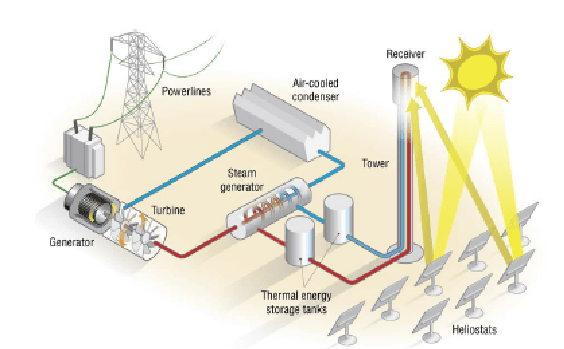

Concentrating solar power (CSP) technology is on the cusp of changes that are likely to drive the pace of deployments to new heights. Already able to produce utility-scale amounts of renewable electricity cost-effectively, scientists and engineers have been focusing on developing new, more efficient and cheaper thermal energy storage systems and integrating them into CSP plants. That goal now appears within reach.
Spanish sustainable energy multinational Abengoa commissioned the first CSP facility with a grid-scale, molten-salts energy storage system in the U.S. last October. The company upped the ante last week, announcing that Chile's environmental regulator had approved the planned 110-megawatt (MW) Cerro Dominador, a project which, if successfully completed, will be the first utility-scale CSP facility capable of supplying electricity to the grid 24 hours a day, seven days a week.
Looking to keep the advances coming and momentum going, the U.S. Department of Energy (DOE) on May 21 announced it will provide $10 million in research-and-development (R&D) funding for six new CSP projects. Each of these projects aim to develop cheaper and more efficient thermochemical energy storage systems that could boost the performance and lower the costs of utility-scale CSP further.
Six New CSP-thermal energy storage R&D projects
For the six new DOE-funded R&D projects, teams from universities, national laboratories and research institutes will work together with industry partners to design and test new thermochemical energy storage processes and systems “which could store the sun's energy at high densities and temperatures in the form of chemical bonds,” the DOE explains.
“The chemical compounds used to store the chemical energy are later broken down to release energy when needed.” Success, DOE adds, would help “the industry step closer to meeting the SunShot Initiative’s technical and cost targets for CSP and moving the U.S. toward its clean energy future.”
"2014: The Year of Concentrating Solar Power"
DOE funding and other means of support have been both seminal and pivotal in facilitating the rapid pace of technological advance and commercialization experienced in the CSP industry to date.
More than 13 gigawatts (GW) of solar power capacity had been installed in the U.S. as of year-end 2013. That's more than 15 times the amount installed in 2008 and enough clean, renewable electricity to power over 2 million average U.S. homes.
The ability to combine utility-scale CSP electricity production with grid-scale energy storage would solve the solar energy industry's biggest hurdle, and critics' favorite target–solar energy's intermittent nature. As Energy Secretary Ernest Moniz stated in a DOE press release:
“By improving energy storage technologies for concentrating solar power systems, we can enhance our ability to provide clean and reliable solar power, even when the sun is not shining.”
Looking to disseminate and share news of developments and industry experience, the DOE, in addition to announcing R&D funding for six new projects, released a new report that highlights the progress made across five major CSP deployment projects that are already up, running and producing electricity.
“The year 2014 marks a significant milestone in the history of American solar energy. Through sustained, long-term investments by the United States Department of Energy (DOE) and committed industry partners, some of the most innovative CSP plants in the world connected to the United States electricity grid in 2013, and five plants of this kind are expected to be fully operational by the end of 2014,” DOE highlights in the introduction of “2014: The Year of Concentrating Solar Power.”
Zooming in on CSP, the five facilities ramping up to full production in 2014 will almost quadruple CSP production capacity in the U.S. In its new report, the DOE provides status and progress updates for the 250-MW Solana CSP solar parabolic trough-thermal energy storage plant near Gila Bend, Ariz.; the 250-MW Genesis parabolic trough in Blythe, Calif.; the 392-MW Ivanpah CSP tower in Ivanpah Dry Lake, Calif.; the 110-MW Crescent Dunes CSP tower-thermal storage facility in Tonopah, Nev.; and Mojave One, a 250-MW CSP parabolic trough facility near Barstow, Calif.
All images credit: DOE, "2014: The Year of Concentrating Solar Power"
Volvo Group Studies an Electric Avenue
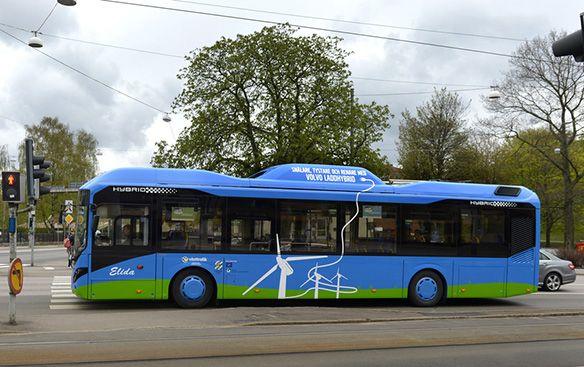

There are electric satellites from Boeing and electric planes from Airbus, so why not electric roads, brought to you by Volvo Group?
Volvo, in collaboration with the Swedish Transport Administration, is studying the potential for building electric roads where city buses—built by Volvo, of course—can be charged from electricity in the road while the bus is in operation.
Talk about hot pavement! “The benefit is quieter and more climate-smart public transport,” Volvo says. A 300- to 500-meter (328 to 547 yards) road in central Gothenburg, Sweden is under consideration for construction as a test track next year.
“Vehicles capable of being charged directly from the road during operation could become the next pioneering step in the development towards reduced environmental impact,” says Volvo Group’s Niklas Gustavsson, executive vice president, corporate sustainability and public affairs.
He noted that “close cooperation between society and industry” will be needed for this kind of development to get rolling.
Volvo’s press release explains the idea: With an electric road, vehicle batteries will be continuously charged wirelessly during operation by transferring energy from the electric grid to a vehicle, instead of charging the bus while it is standing still at charging stations. This technology is called inductive charging, also known as wireless charging; in this case the electricity is transferred to the underside of the bus by equipment built into the road.
Volvo said it will develop a detailed proposal under the “innovation procurement” guidelines of the Swedish Transport Administration. The proposal involves building a road section equipped with wireless charge technology and developing vehicles that will automatically charge their batteries when passing through the section.
The road will be built along a bus line in central Gothenburg and be tested for public transport. “Experiences from such a test track will provide valuable knowledge for future political and industrial decisions for establishing electric roads,” Volvo says.
Volvo Group has developed hybrid buses with a traditional diesel engine that is supplemented by an electrical engine to reduce CO2 emissions. Three Volvo plug-in-hybrid buses are already in operation in Gothenburg (project Hyper Bus*), which charge their batteries at the end stations. “The next stage of development is for these types of buses to be able to charge their batteries while in operation, thus increasing the distance the buses can run on pure electricity.”
That’s precisely what is under study with this initiative. Volvo says that in 2015, a new bus line, ElectriCity, will become operational between Chalmers and Lindholmen in Gothenburg. “This line will also provide additional knowledge of charging technology and electric power for heavy vehicles,” Gustavsson said.
ElectriCity – great name. Eddy Grant’s classic comes to mind: “Oh no, we gonna rock down to Electric Avenue/And then we'll take it higher.”
Image credit: Volvo plug in Hyper Bus, Volvo Group Media
Sustainable Brands ‘14 Preview: Arrow Electronics on CSR Metrics
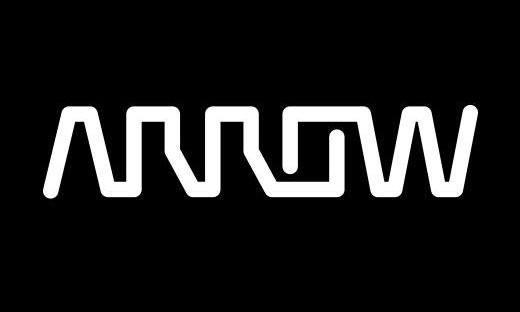

By Bart King
In 2011, Colorado-based Arrow Electronics began a complete corporate rebranding, followed by a relaunch of the company’s corporate social responsibility (CSR) program.
Arrow is one of the largest suppliers of electronics components in the world with $21.4 billion in sales in 2013 and 460 locations in 58 countries around the world.
At the upcoming Sustainable Brands '14 San Diego conference (June 2-5), Rich Kylberg, Vice President of Global Marketing and Communications at Arrow, will discuss the convergence of the company’s rebranding and CSR program.
I caught up with him for a quick preview conversation about CSR metrics.
Bart King: Since the launch of your new CSR program in 2013, what’s different about the way things are being done at Arrow?
Rich Kylberg: Before we underwent this program, Arrow did not have a single person—out of 15,000 employees—who was responsible for corporate responsibility. CSR initiatives would happen sporadically, as someone had the good sense to recognize we need to do these things. But they would just kind of boil up with no real hope of scaling.
Now with Joe Verrengia coming on as the company’s first dedicated CSR manager, our efforts can gain traction in the marketplace, and we’re able to bring consistency and standards to what we’re trying to accomplish. We’re investing about the same amount of assets and resources as before, but the impact is exponentially more profound. Our efforts are shared around the world internally and they’re getting more attention externally, which brings us more opportunities to do interesting things – like our quadriplegic racecar, or the composition we commissioned from the Colorado Symphony Orchestra.
We’re no longer just another corporation doing a blood drive or writing a check and getting our picture taken with a big piece of cardboard. I’m not saying that’s a bad thing to do. I think it’s a great thing to do. But I think it’s suboptimal from a corporate point of view.
BK: Have CSR responsibilities been added to the responsibilities of any other employees?
RK: Not officially. But this year, we have recruited a volunteer team of employees across our business units to help us develop a common set of sustainability standards and practices across Arrow and in all of our locations. It’s a large undertaking not only because of our global reach, but because many of our acquisitions still function with great autonomy.
We attract employees who are naturally inclined towards CSR activities. It’s in our corporate mission. If we didn’t do it, people would be left scratching their heads.
BK: How are CSR metrics important to the restart of Arrow’s CSR program?
RK: Arrow had a suboptimal CSR program in the past, and ultimately there were inadequate metrics. There was CSR activity, but you had to take a leap of faith regarding the impact.
A lot of the activity was at the level of the business unit or individual. The company wasn’t recording and capturing all of the good things it was doing. So it was easy for things to fall by the wayside. When we hit the recession in 2007-08, people had to tighten belts. It wasn’t a problem of CSR that it got cut. Rather, it wasn’t being measured and understood, so people couldn’t attach it to any tangible benefits.
So, in order to protect our CSR efforts in the future, we’re putting into place metrics to closely examine whether initiatives are exceeding or failing. Obviously, if they’re not working, we want to back off them, and if they’re succeeding, we want to put more investment into them.
The benefits of CSR activity are not always brand awareness or improved employee morale. CSR initiatives can support practically any aspect of corporate activity. If you understand that going into it, you can measure the results coming out of it.
BK: So how are you measuring the impact of your new program?
RK: When we established the program in early 2013, we wanted a set of metrics that would inform the selection of projects and evaluate their success. Currently what we’re using is a balanced scorecard approach. We looked at examples and advice from a variety of sources, such as the Boston College Center for Corporate Citizenship, before creating our own scorecard.
The math is pretty simple. It’s 100 points across ten categories. We evaluate our incoming requests through the scorecard and then as we develop deeper partnerships, we use the criteria to make sure we’re hitting the mark. As this matures, if everything we’re doing isn’t getting an 80 or above—a B average or above—it raises the question: “Why are we doing it?” Then we can work with partners to improve the relationship and the score.
Ultimately the score can be used to change directions. But right now we want to use it in a more encouraging way. We can say: Here’s how we evaluate our relationship. How can we do better with you?
BK: What is “balanced” about the scorecarding system?
RK: It covers a wide range of measurements. We’re not just looking at one measurement of ROI for the relationship—such as the number of media hits, or a measurable expansion of a related business. The measurement is varied: Is there employee engagement? Is there an executive champion? Is there a tangible innovation result? Does it involve electronics or not?
Not all of our projects involve electronics, but we know they are transformative, so we look for that. After all, electronics is our business. The scorecard covers a broad waterfront of what we’re looking for. That’s why it’s called balanced.
BK: How subjective is the use of these questions?
RK: The metrics are subjective in the sense that a variety of participants can score CSR opportunities or initiatives differently, based on their perspectives. But if we answer the questions honestly, we’re all going to fall into a certain range.
The questions include: How does this apply to Arrow and our CSR goals? How closely is this relationship and opportunity aligned with the brand? How much innovation are we achieving in this relationship? (Because that’s what we’re really looking for.) We also ask whether or not there’s an executive champion for the relationship, because we all know that’s really important for success. Those are the types of elements we’re looking for, and we grade them on a scale of 1 to 10.
The total score is what’s labeled the “engagement rating” in our CSR report.
BK: How have partners and prospective partners responded to the scorecarding system?
RK: We share the scorecard criteria with existing and prospective CSR partners so everyone can clearly see the criteria by which we consider partnerships. Organizations that we already sponsored were quick to adopt and apply the criteria from their own perspectives.
Arrow’s CEO has been on the board of the Denver Zoo for several years. Since we established the formal CSR program and the scorecard, the zoo shared with us its plan to become the most sustainable zoo in the U.S. So we immediately applied our sponsorship to the zoo’s new program of establishing recycling stations.
This year, our sponsorship is expanded to support the zoo’s waste-to-energy facility, which is expected to go online by the end of the year. This biomass gasification system will curtail significant landfilling of waste and save money in energy and trash hauling costs, while generating clean power to meet 20 percent of the zoo’s energy needs.
We’re also beginning to ask our partners to have their own evaluation and reporting processes, so we’re not just getting a letter at the end of the year saying, “Thank you for your contribution.” Instead we’re receiving feedback on progress, innovation and results.
BK: You mentioned a quadriplegic racecar. Can you tell me more about that?
RK: We wanted to demonstrate the engineering chops of Arrow Electronics. So we pulled together engineers from all parts of the organization to modify a racecar to be driven by a quadriplegic. The project has become quite interesting from a business perspective for Arrow, but it started out with a CSR sensitivity: Can we do something to make this world a better place perhaps for people with physical disabilities?
Our engineers achieved something that had never been done before. We did it with a hospital and foundations that are clearly more knowledgable about the medical aspects. But when it comes to the technology, knowledge and maybe even the courage to embark on the project—that’s where Arrow came in.
https://www.youtube.com/watch?v=F4vqcNabEL4
BK: What kind of business opportunities have come out of the project?
RK: The project is getting attention in the press. As awareness expands, we’ve had current and potential customers reaching out to ask us to help with other projects. They’re recognizing Arrow has the capabilities for that kind of project, as well as the heart.
So it’s starts out with noble intent—I’d call that CSR. We didn't know if it would work when we started. But we knew if it could, we would do something positive in the world.
So we took the risk and pulled it off. As a result we’ve expanded Arrow’s business materially and our employees’ internal appreciation for positive motives in CSR.
Bart King is the principal of New Growth Communications, a network of affiliated content producers and strategists serving clients in the emerging green economy. He also is an associate editor for Sustainable Brands. Follow him on Google+.
Cheaper Renewable Fuels: Is Algae the Missing Ingredient?
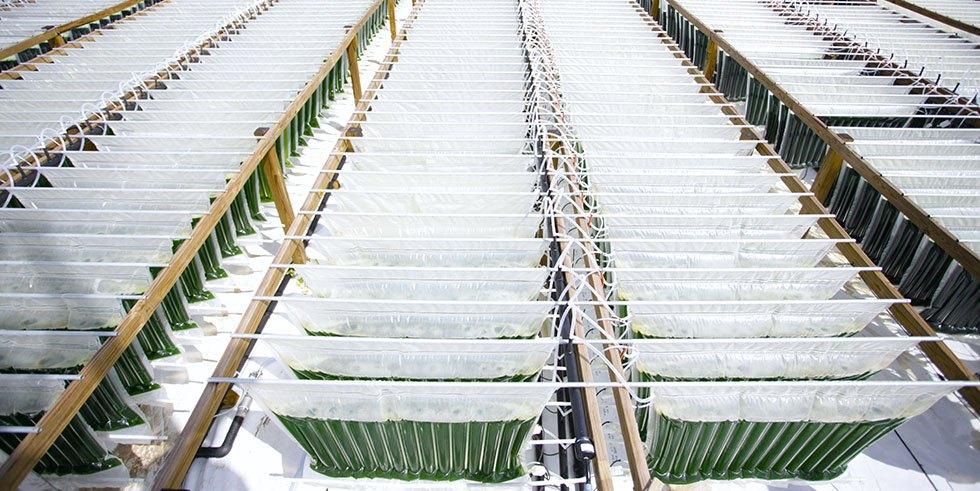

Do you remember from your high school science class how photosynthesis converts sunlight, carbon dioxide and water into sugars? Algae creates sugars really quickly, making it an appealing feedstock for ethanol and other biofuels. Pond scum may one day power your car.
Algae-based biofuels have numerous pros and cons when compared to other sources of biofuels and oil products. Algae can be grown all year long and doesn't require petroleum-based fertilizers. Algae ponds, however, can be expensive and difficult to manage, and the process requires carbon--making it dependent on fossil fuels. The viability of algae-based fuels however varies widely by the process, and some closed systems processes seem very promising.
"Not all algae can be lumped together," says Paul Woods, CEO of Algenol, a biotechnology company that produces ethanol and other fuels. "There are lots of [algae-based biofuel] programs that use fresh water and open ponds that have high evaporation rates, even if they use brines. Algenol has a closed system. Ethanol evaporates. If we had an open system, we would lose all our product and because it is closed, it isn’t subject to evaporation."
Paul Woods gives many convincing reasons why Algenol's patented technology creates a high-yield product, without large amounts of fresh water or cropland, to power our vehicles. In fact, Woods says the Algenol process has yielded over 10,000 gallons of fuel per year at its pilot-scale facility in Fort Myers, Fla. After ethanol is produced, waste algae is used to produce smaller amounts of jet fuel, diesel and gasoline. Corn produces a measly 420 gallons of ethanol per acre, per year. In addition, algae can also be cultivated on land that isn't suitable for other agriculture.
"Here in Florida, when you dig a well down, you can connect directly to the ocean, like a filtered straw," says Woods. "We go down 1,800 feet, we pull directly from the aquifers going into the ocean, which isn’t suitable for agriculture because it is way too salty."
A large plant would a have one or two hundred workers, because the process is automated. Many more temporary jobs are created, however, to construct a commercial facility.
The Algenol process requires algae, saltwater and carbon dioxide. A natural gas power plant flue is an ideal source for the carbon dioxide required in the process. Instead of using a pond, the closed system occurs within a plastic bag.
"We have a 50-liter bag," explains Woods. "We have a lot of them, and that’s a very small amount of culture to manage. We do all of our scale-up through replicating the same module over and over again. "
"We have two strategic investors in our company," says Woods. "One of them operates the largest refinery in the world. They have 20,000 engineers on their staff. They've had significant input into the scaling up of our technology." Algenol previously partnered with Dow Chemical, but ended the relationship in 2010.
Algae biofuels critics point out that algae simply cannot generate enough ethanol to generate fuel to power the world. Woods seems to agree.
"I think the bigger picture is: How are we going to supply the energy to an expandig middle class on this planet, without having the entire planet covered in coal power plants? That’s the real challenge. Even if I put up as many Algenol plants as I could possible do, it would still just meet the incremental demand."
Image credit: Algenol
Sarah Lozanova is a regular contributor to environmental and energy publications and websites, including Mother Earth Living, Green Building & Design, Triple Pundit, Urban Farm, and Solar Today. Her experience includes work with small-scale solar energy installations and utility-scale wind farms. She earned an MBA in sustainable management from the Presidio Graduate School and she resides in Belfast Ecovillage in Midcoast Maine with her husband and two children.